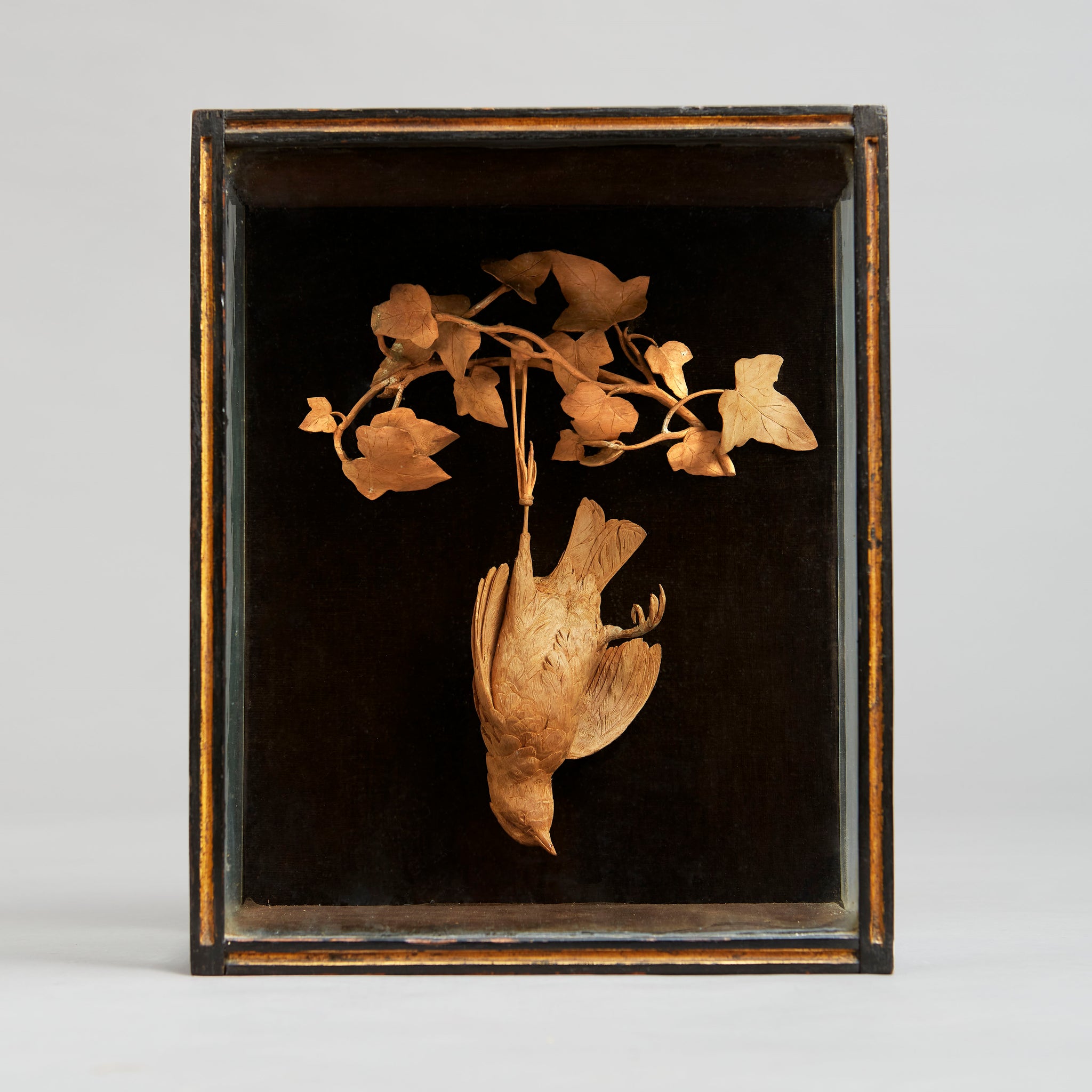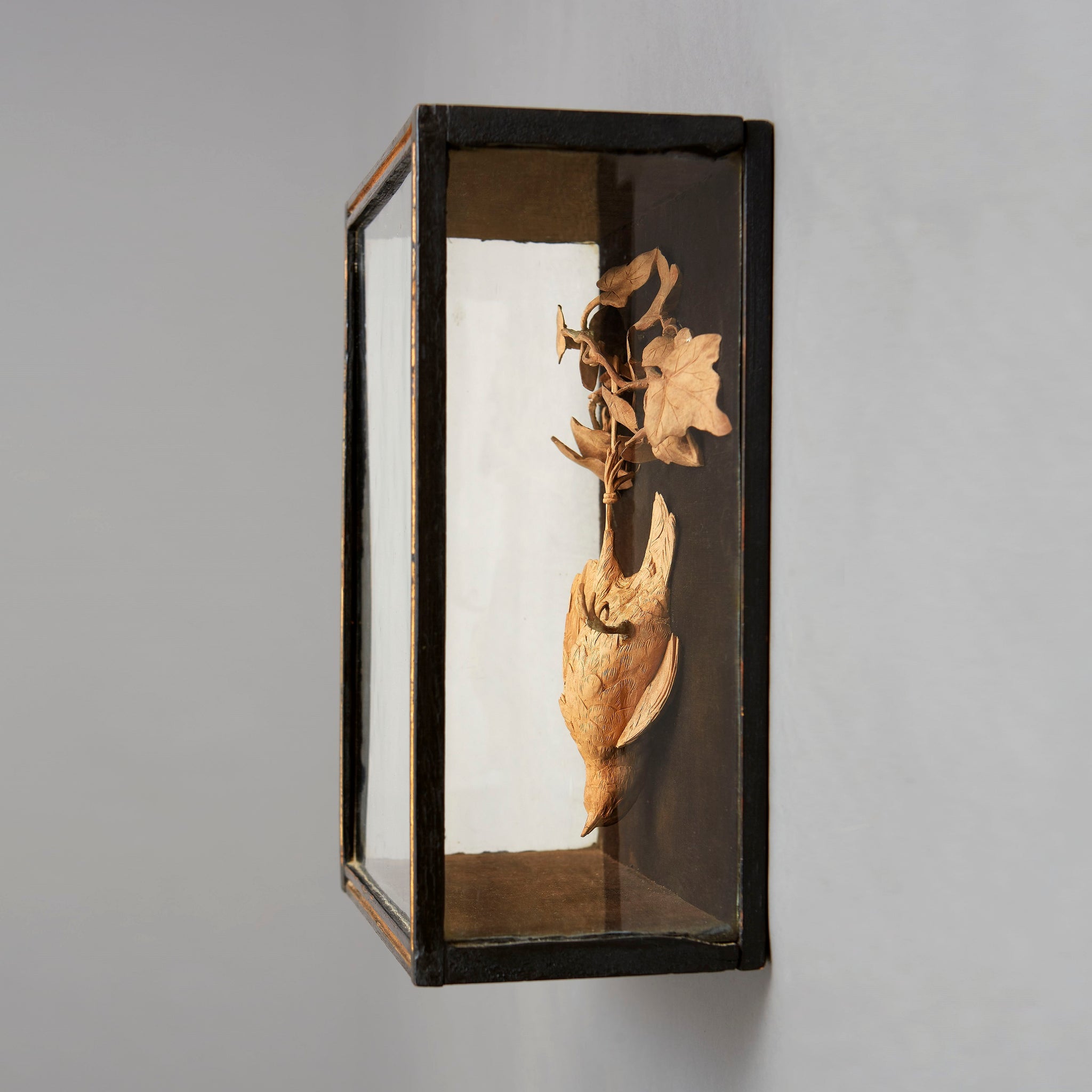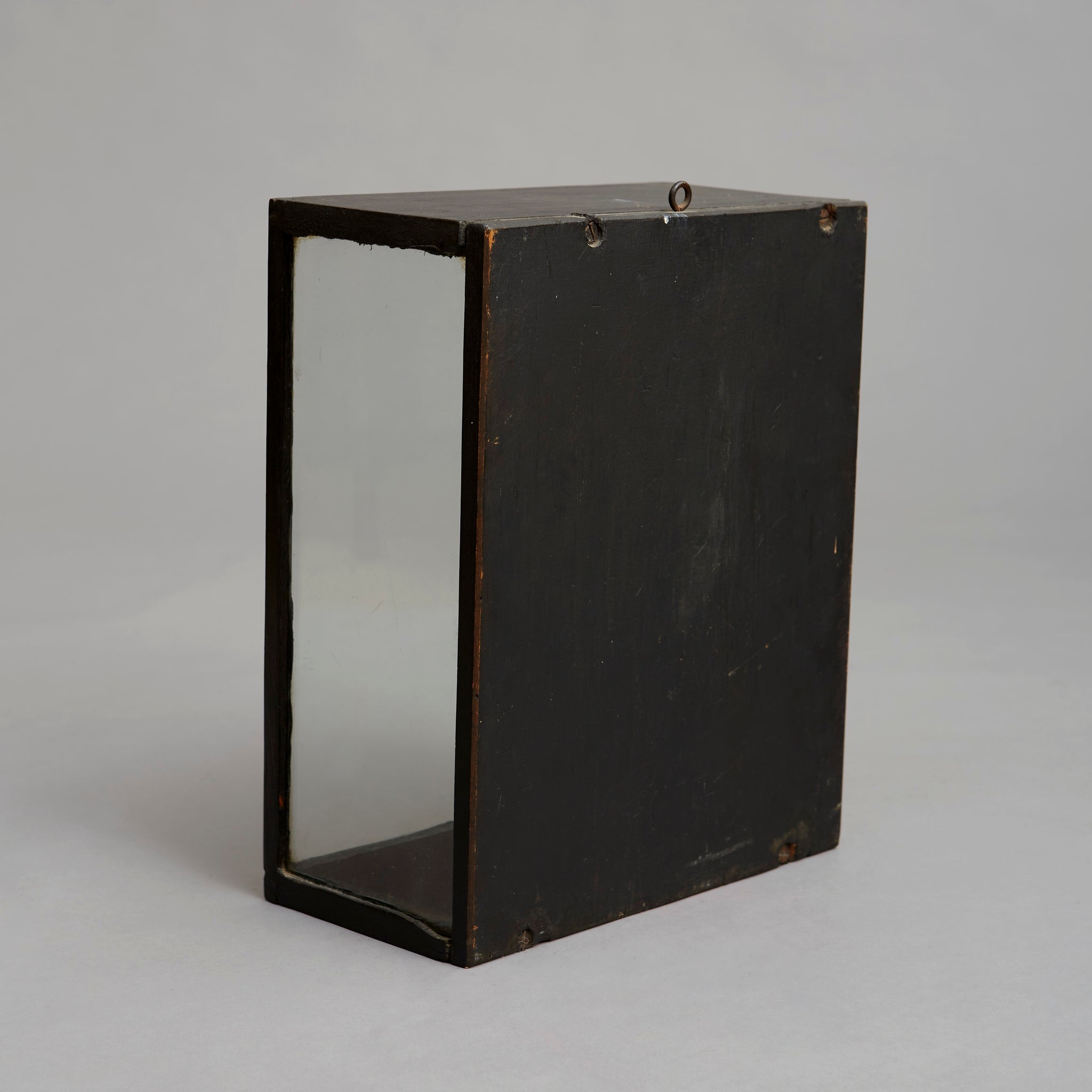Robin with Ivy (Thomas Wilkinson Wallis of Louth)
SOLD
A CARVED GROUP OF A ROBIN WITH IVY IN ORIGINAL GLAZED CASE
FIRMLY ATTRIBUTED TO THOMAS WILKINSON WALLIS OF LOUTH
Louth, England
Circa 1855
This exquisite sculpture worked from one piece of limewood is typical of Thomas Wallis’s work in the use of one block of wood, a pin and string suspension, leafing ivy and a dark brown velvet back drop.
Traces of old minor restoration to carving as follows: beak re-tipped, left leg and ivy display some glued breaks.
Measurements of case: Height 12 ¾” (32.5 cm); Width 10 ½” (27 cm); Depth 5 ½” (14 cm)
An extract on page 123 of his autobiography, headed Paris Exhibition 1855, reads as follows:
‘From Mr Vardon I learnt that the birds I had used for his group were not what he wished for. I had used a Wagtail, a Robin and a Tern.
He must have the Wagtail and Snipe and any other I might choose……I should be able, doubtless, to dispose of the other’.
From this extract we conclude that the present Robin is almost certainly the one discarded by Mr Vardon.
Thomas Wilkinson Wallis 1821-1903 was apprenticed for seven years from 1835 to 1841, became a journeyman from 1842-1844 in which latter year he took over the business of John Brown of Louth. By 1848 his extraordinary skill was beginning to attract the attention of affluent patrons, among whom was Colonel George Tomline MP. The latter acquired Orwell Park in 1848 and proceeded to furnish Wallis with several substantial commissions as well as introducing him to London society. With his reputation now well and truly established as the 19th century Grinling Gibbons he won gold medals at the Great Exhibition of 1851 and the Paris Exhibition of 1855. His output continued until 1887 when, sadly, his failing health and eyesight caused his retirement.
His 60 year Journal is a remarkable narrative of the life and times of a craftsman in the 19th century. The detailed account from a man of such humble beginnings serves as proof of the creative genius of the man.
In 2009 we were fortunate to acquire the Woodcock commissioned in 1854 by the Marquis of Ailsa for Cassilis which we subsequently sold to the Louth Museum. It now shares a space with five other Wallis carvings which together form a tribute to the great man in his home town.
Collections: Archive
Share:




